|
|
| |

F
A M I L Y T R E E S & BIOGRAPHIES
of Manchester NH People
(Founders, Natives & Residents)
|
Biographies | French
& Indian War Roster
Genealogies & Biographies (External)
[Also see "History"
section for mention of many of the early settlers of this area]
There are many unsung heroes and heroines of Manchester
New Hampshire whose names are not mentioned here. These include
the 'house wives,' mill workers, laundresses, chauffeurs, maids,
stable boys and all of the other "uninfluential" people
who made up the majority of the population. Their accomplishments
may not appear in any of the history books about Manchester, but
without their existence, the city would not have grown and developed.
I salute all of them.
B
I O G R A P H I E S
& G E N E A L O G I E S
(When
a thumbnail photograph is present, click the graphic to see a larger view)
Hypertext
on the name of the individual links to their biography and/or family tree.
|
|
|
|
|
|
|
|
|
Joseph
Bernier
publisher of L'Avenir
|
|
|
|
|
|
|
|
|
|
|
|
|

Dr.
William D. Buck |

Hon.
David A. Bunton
|
|
|
|
. |
|
|
|
|
|
|
|
|
|
|
|
|
|
|
|
|
|

Nathaniel
Wentworth Cumner
|
|
|
|
|
. |
|
|

Alfred
G. Fairbanks
|

Moses
Fellows
|
|
|
|
|
|
|
|
|
|
|
|
|

Frank
Monroe Frisselle.
|
|
|
|
|
|
.
|
.
|
|
|
|
|
|
|
.
|
John
Hall
|
|
|
|
|
|
|
|
|
|
|
|
|
|
|
Benjamin
Kidder
|
|
|
|
|
|
|
|

Elizabeth
"Nacky" (Scripps) Gallowhur,
LOEB
|
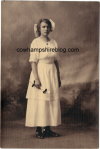
Glady
Harter (Hesser) Lord (1899-1961)
Teacher, Hesser College Owner
|
|
|

John
H. Maynard
|
|
|
|
|
|
John
MOOR - John, son of Maj. Samuel, and Deborah
(Butterfield) Moor was born in Litchfield, N.H., Nov. 28,
1731.
|
|
|
|
|
|
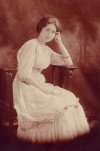
New Hampshire WWI Military: Yeoman
Anne (Frasier) Norton of Derry, Manchester and Portsmouth
NH (1893-1918)
|
. |
. |
|
|
|
|
|
|
|

Dr.
William Moody Parsons
|
|
|
|
.
|
| . |
|
|
|
|
Online
Book: Memoir of William
Shepherd, innkeeper of Concord MA and Manchester NH
in 1839
|
.
|
|
|
|
|
|
|
|
|
|
|
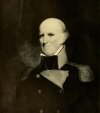
Gen.
John Stark, by Samuel F.B. Morse, 1816, Courtesy of Macbeth
Galleries, New York. From book: Life of General John Stark
of New Hampshire by Howard Parker Moore, 1949
|
|
|
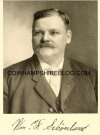
William
F. Schonland of Schonland's meat products
|
|
|
|
|
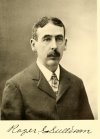
Manchester
New Hampshire Cigar Manufacturer, Director and Philanthropist:
Roger
G. Sullivan (1854-1918)
|
|
|
|
|
|
|
|
|
|
|

Dr. Charles Wells
|
|
|
|
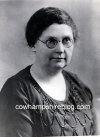
Effie
Brown (Earll) Slingerland Yantis (1869-1950)
Illustrator,
Lecturer, Social Worker, New Hampshire Politician
|
|
|
-
Genealogy of the Moore family : of Londonderry, New Hampshire,
and Peterborough, New Hampshire, 1648-1924. - Ancestry.com
JOHN
GOFFE was an influential man in the new settlement, and
had a son, John, who became a distinguished officer in the French
and Indian War. The
(current) Wayfarer Inn is located on the site of the historic
John Goffe's Mill. A Historic marker can be found on Route 3 in
Bedford near the Manchester line, about .2 miles north of its junction
with Route 101. This is considered the site of Squire John Goffe's
log homestead on Bowman's Brook. John Goffe's Mill, now part of
the motel complex across the road [see the Wayfarer link above],
was built in 1744 by his grandson, Major John, rebuilt in 1834 by
his great grandson, Theodore, following a fire, and again in 1939
by another descendant, Dr. George Woodbury. Prominent in Bedford
history, the family name was given to neighboring Goffstown and
Goffe's Falls. Four generations of Goffes, with their wives, rest
side by side in Bedford's Old Burying Ground. Other descendants
rest in the Bedford Center Cemetery. SEE
GENEALOGY (FAMILY TREE) OF JOHN GOFFE
(added May 2005)
BENJAMIN
KIDDER doubtless came here about 1722 with his father-in-law, John
GOFFE, as he was a grantee of Londonderry in that year. He probably was originally
of Billerica. He entered in the company under the famous Captain LOVEWELL, in
the expedition against Pequauquauke, and while on the march, and in the neighborhood
of Ossipee Lake, was taken sick. It is probable that he did not long survive the
hardships and exposures of this expedition. His son, John KIDDER, was named as
a legatee in the will of his grandfather, John GOFFE, Esq., made in 1748.
EDWARD
LINGFIELD -- Very little is known of Edward LINGFIELD (often written
as LINKFIELD). He married a daughter of John GOFFE,
Esq., and settled in the Manchester area about 1722. He was a corporal in
Lovewell's expedition, was one of the thirty-four men who marched from Ossipee
Lake to Pequauquauke, and took part in that famous battle, where he fought with
great bravery. He was one of the nine men in that battle "who received no
considerable wounds." After his return from that expedition, he received
an ensign's commission as a reward of his heroic conduct in the battle of Pequauquauke.
JOHN
McNEIL came to Londonderry with the first emigrants in 1719. The McNEILS
of Scotland, and in the north of Ireland, were men of known reputation for bravery,
and Daniel McNEIL was one of the Council of the city of Londonderry, and has the
honor, with twenty-one others of that body, of withstanding the duplicity and
treachery of Lundy, the traitorous Governor, and affixing their signatures to
a resolution to stand by each other in defense of the city, which resolution,
placarded upon the market-house and read at the head of the battalions in the
garrison, led to the successful defense of the city.John
McNEIL was a lineal descendant of this councilor. Becoming involved in a quarrel
with a person of distinction in his neighborhood, who attacked him in the highway,
McNEIL knocked him from his horse, and left him to be cared for by his retainers.
This encounter, though perfectly justifiable on the part of Mr. McNEIL, as his
antagonist was the attacking party, made his tarry in Ireland unpleasant, if not
unsafe, and he emigrated to America, and settled in Londonderry. Here he established
a reputation not only as a man of courage, but one of great strength, and neither
white or Indian man upon the borders dared to risk a hand-to-hand encounter with
him. Measuring six feet and a half in height, with a corresponding frame, and
stern, unbending will, he was a fit outpost, as it were, of civilization, and
many are the traditions of his personal encounters during a long and eventful
border life. His wife, Christiana, was well mated with him, of strong frame and
great energy and courage. It is related that upon one occasion, a stranger came
to the door and inquired for McNEIL. Christiana told him that her "gude mon"
was not at home. Upon which the stranger expressed much regret. Christiana inquired
as to the business upon which he came, and the stranger told her he had heard
a great deal of the strength of McNEIL and his skill in wrestling, and had come
some considerable distance to throw him. "And troth, mon," said Christiana
McNEIL, "Johnny is gone, but I'm not the woman to see ye disappointed, an'
I think if ye'll try mon, I'll throw ye meself." The stranger, not liking
to be thus bantered by a woman, accepted the challenge, and, sure enough, Christiana
tripped his heels and threw him upon the ground. The stranger, upon getting up,
thought he would not wait for "Johnny," but left without deigning to
leave his name.
**ADDED
April 2005**
Genealogy - Family Tree of Archibald &
Gen. John STARK
ARCHIBALD STARK
was born at Glasgow, in Scotland, in 1693. Soon after graduating at the university,
he moved to Londonderry, in the north of Ireland, becoming what was usually denoted
a "Scotch-Irishman." There he was married to a poor, but beautiful Scottish
girl, by the name of Eleanor NICHOLS, and emigrated to America. He at first settled
in Londonderry, where he remained until some time in 1736, when, having his house
burned, he removed to that portion of land upon the Merrimack then known as Harrytown,
upon a lot that had been granted to Samuel THAXTER by the government of Massachusetts,
and which was situated upon the hill upon the east bank of the Merrimack, a short
distance above the falls of Namaoskeag. Here he resided until his death. An educated
man, STARK must have had a strong desire that his children should enjoy the advantages
of an education; but in a wilderness, surrounded by enemies, and upon a soil not
the most inviting, the sustenance and protection of his family demanded his attention
rather more than their education. His children, however, were instructed at the
fireside in the rudiments of an English education, and such principles were instilled
into them as, accompanied with energy, courage and decision of character, made
them fit actors in the stirring events of that period. His education fitted him
rather for the walks of civil life; but yet we find him a volunteer for the protection
of the frontier against the ravages of the Indians, in 1745. For the protection
of the people in this immediate neighborhood, a fort was built at the outlet of
Swager's or Fort Pond, which, out of compliment to Mr. STARK's enterprise in building
and garrisoning the same, was called Stark's Fort.
Mr.
STARK had seven children--four sons and three daughters. His four
sons: William, John, Archibald and Samuel, were noted soldiers
in the Indian and French wars, and the three oldest had distinguished
themselves as officers in the notable corps of Rangers prior to
their father's death. The second son, John, became the famous
partisan officer in the Revolution, and as a brigadier won unfading
laurels at the battle of Bennington. Mr. STARK died the 25th day
of June, 1758, aged sixty-one years. [more
info on Archibald Stark and his genealogy - archived version]
General
JOHN STARK,
son of ARCHIBALD STARK - Roger's Ranger and Revolutionary hero, served at Bunker
Hill and in Washington's New Jersey campaign of 1776 to 1777, and commanded the
American militia which decisively defeated two detachments of Burgoyne's army
near Bennington, Vermont, August 16, 1777. He married Elizabeth
"Molly" Page. A stone marks his birthplace on Stark Road, six-tenths
of a mile easterly on Lawrence Road. John Stark is
buried in Manchester.
SEE online: "General
Stark and the Battle of Bennington" - from Harper's new monthly magazine.
/ Volume 55, Issue 328, September 1877 (Cornell University Library)
JOHN
HALL came
to this country probably after 1730. He tarried some time in Londonderry, and
then moved upon a lot of land near the west line of Chester, and in that part
of the town afterwards set off to form the town of Derryfield. He was an energetic
business man, and for a series of years transacted much of the public business
of this neighborhood and town. He kept a public-house until his death. The original
frame house built by him, but added to according to business and fashion, until
little of the original could be recognized, was standing until 1852, when it was
destroyed by fire. It had always been kept as a public-house, and generally by
some one of the name.Mr.
HALL was the agent of the inhabitants for obtaining the charter of Derryfield,
in 1751, and was the first town clerk under that charter. He was elected to that
office fifteen years, and in one and the same year was moderator, first selectman
and town clerk.
WILLIAM
GAMBLE and MICHAEL McCLINTOCK --
William GAMBLE came to this country in 1722, aged fourteen years. He and two elder
brothers, Archibald and Thomas, and a sister, Mary, started together for America,
but the elder brothers were pressed into the British service upon the point of
sailing, leaving the boy William and his sister to make the voyage alone. William
was saved from the press-gang alone by the ready exercise of "woman's wit."
The GAMBLEs had started under the protection of Mr. and Mrs. Michael McCLINTOCK,
who resided in the same neighborhood, and were about to emigrate to New England.
Upon witnessing the seizure of the elder brothers, Mrs. McCLINTOCK called to William
GAMBLE, "Come here, Billy, quickly," and upon Billy approaching her,
she continued, "Snuggle down here, Billy," and she hid him under the
folds of her capacious dress! There he remained safely until the gang had searched
the house for the boy in vain, and retired in high dudgeon at their ill success.Upon
coming to this country, the McCLINTOCKs came to Londonderry. They were industrious,
thriving people, and Michael and William, his son, built the first bridge across
the Cohoes, and also another across the Little Cohoes, on the road from Amoskeag
to Derry. These bridges were built in 1738, and were probably near where bridges
were still maintained, across the same streams on the "old road to Derry,"
ca. 1885. The McCLINTOCKs were voted twenty shillings a year for ten years for
the use of these bridges. William
GAMBLE, upon his arrival in Boston, went to work on the ferry from Charleston
to Boston. Here he remained two years. During the Indian War of 1745, he joined
several "scouts," and upon the commencement of the "Old French
War," in 1755, having lost his wife, he enlisted in the regular service,
and was in most of the war, being under WOLFE on the "Plains of Abraham."
|
|
Family
Tree of William-1 NUTT (1698-1771) and descendants. Perhaps
one of the most "famous" of his descendants was:
George
Washington Morrison Nutt, "a
little person," born in Manchester, New Hampshire,
1 April, 1844;died in New York city, 25 April, 1881. He was
first placed on exhibition in Barnum's
museum in New York city, accompanied Charles S. Stratton
("Tom Thumb") on a tour around the world in 1869-'72,
and subsequently conducted theatrical shows in Portland, Oregon,
and San Francisco, California, in partnership with his brother,
Rodney, who, besides himself, was the only diminutive member
of the family. Afterward he managed travelling companies.
" Commodore" Nutt, as he was called, though well-proportioned,
was only 43 inches high. He performed in Keene NH in 1868.
Read his obituary from the May 26, 1881 issue of the NY Times:
"COMMODORE
NUTT" DEAD.; THE HISTORY OF THE WELL-KNOWN DWARF"
|
|
|
Frederick
Smyth (1819-1899)
Born in Candia, NH, later moving to Massachusetts and then
later to Manchester NH.Frederick
Smyth was a banking and railroad executive who was active in Republican and New
Hampshire state politics. He served as governor of New Hampshire for two terms
(1865-66).
|
GENEALOGY
& BIOGRAPHIES - External
(If
you would like to submit your family, please contact me. I reserve
the right to refuse to post the links of web sites with pop-up
advertising or affiliate program links at my own discretion)
- Biographies
- Genealogies
(external - not on this web site)
|
History
and Genealogy of Manchester, Hillsborough County, New Hampshire
at SEARCHROOTS
Copyright 2001-2020
|All Rights Reserved
Send
email to the webmaster
| | |

